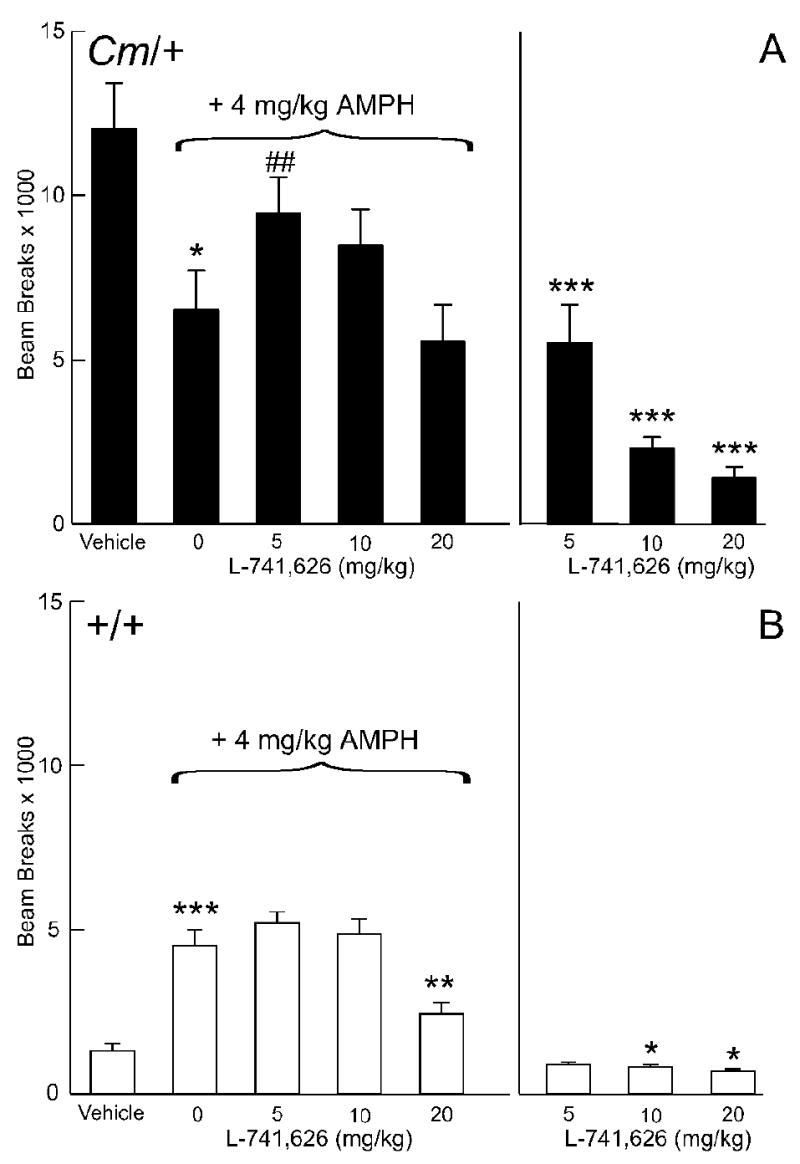Fig. 4.

Effect of the D2-selective dopamine receptor antagonist L-741,626 on amphetamine-mediated locomotor activity. Coloboma (A) and control mice (B) were treated with saline or 4 mg/kg amphetamine and challenged with L-741,626. Compared to vehicle treatment, amphetamine significantly increased locomotor activity in control mice (***p < 0.001) but significantly reduced locomotor activity in coloboma mice (*p<0.05). There was a significant effect of genotype (F1,14 = 16.5, p < 0.01) and dose of L-741,626 (F3,42 = 10.6, p < 0.0001) on amphetamine-mediated locomotor activity. Post hoc analyses demonstrated a significant increase in amphetamine-mediated locomotor activity after treatment with 5 mg/kg L-741,626 in coloboma mice (## p < 0.01); 20 mg/kg L-741,626 significantly reduced amphetamine-mediated locomotor activity in control mice (**p < 0.01). Treatment with L-741,626 alone produced a significant genotype × dose interaction effect (two-factor ANOVA with repeated measures; F3,42 = 31.7, p < 0.0001). Compared to vehicle treatment, all doses of L-741,626 significantly reduced locomotor activity in coloboma mice (***p < 0.001); 10 and 20 mg/kg significantly reduced the locomotor activity of control mice (*p < 0.05). Data are beam breaks accumulated in 1 hr following drug treatment and are expressed as mean ± SEM (n = 8/genotype/dose).
